An Introduction to the Andamanian Tribes
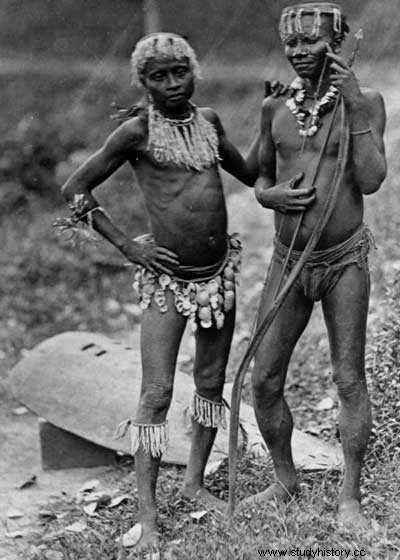
The tribes of indigenous peoples living in the Andaman Islands, which consist of negrito hunters, are the Andamans. Did you know that back in 1908 the term Andaman was used to refer to 13 different indigenous tribes? At present, however, only four tribes are classified as native to the Andaman.
The Sentinel on the North Sentinel Island, the Ongees living on Little Andaman Island, the Great Andamanese on the Strait, and Jarwas from the Central Andaman are the four indigenous tribes.
Geographic location
The Andaman Islands are located in the Bay of Bengal and are known for being an archipelago consisting of 348 islands. This area is known to be covered with densely packed tropical rainforest. Of the 8293 square kilometers of the total land area, around 7464 square kilometers are known to be covered with these forests. The central, as well as the northern island area, is geographically mountainous and hilly. Offshore coral reefs, however, surround the southern islands. The annual rainfall is quite high in this archipelago, almost 275 to 455 centimeters per year. If you want to visit the area in the dry season, you will only find it between February and March.
language
The Andamanian language family is classified into two main branches, namely proto-Little Andamanese and proto-Great Andamanese. Sentinelese, Jarwa and Ongee are three subgroups that come under the proto-Little Andamanese. Bo, Baie of South Andamanese and Bea are subgroups of proto-Great Andamanese. Older records say that the native tribes used to speak different dialects completely incomprehensible to each other. Recent research by experts in the field indicates, however, that there is a certain intersection of spoken terms between each subgroup.
Historical Timeline of the Andamanian Tribes
A strange resemblance between Ongees living in eastern Southeast Asia and the Andamanians has been found. Some experts discuss the origins of the Andamanians as a result of migration via Malaysian or Burmese coasts. Even after all this time, their actual origins remain speculations, which have not yet been confirmed. The presence of the Andamanians came to light in 1788, through British explorations. Many of their generally successful approach strategies did not work with the Andamanian tribes. All attempts at trade and negotiations with the natives failed.
The Andamanian tribes proved to be extremely protective of their homelands, and any attempt to contact them by the British was seen as an invasion. The hostilities with the Andamanians as well as the coral reefs that surrounded the island forced the British to find a port elsewhere. After a long time, from the first contact, in 1859, the British succeeded in creating a safe haven for their future trade route in Port Blair.
Peace Conversations

There were many attempts by the British to reassure the local natives, which in time began to show results. The British administration even tried to implement a demanding home strategy that offered permanent housing to the local natives. Around 1875, researchers and scientists realized that the Andamanian culture was on the verge of extinction. After the realization of the scientific groups, anthropologists began to document the various aspects of Andamanian culture.
After India's independence in 1947, the Andaman people came under the banner of the Indian government. The Andaman Islands are currently under the banner of the Union Territory of India.
The Indian government has tried to implement many economic development measures as well as social welfare campaigns. And yet the Andamanian culture continues to disappear. Sentinel readers as well as Jarwas are outside the welfare business and are structured administration. Despite all attempts by social workers and the authorities, however, the indigenous Andamanian culture has withered away. The great Andamanian group has almost no surviving traditions and customs from their own ancestors.
The Economy of the Andamanian People
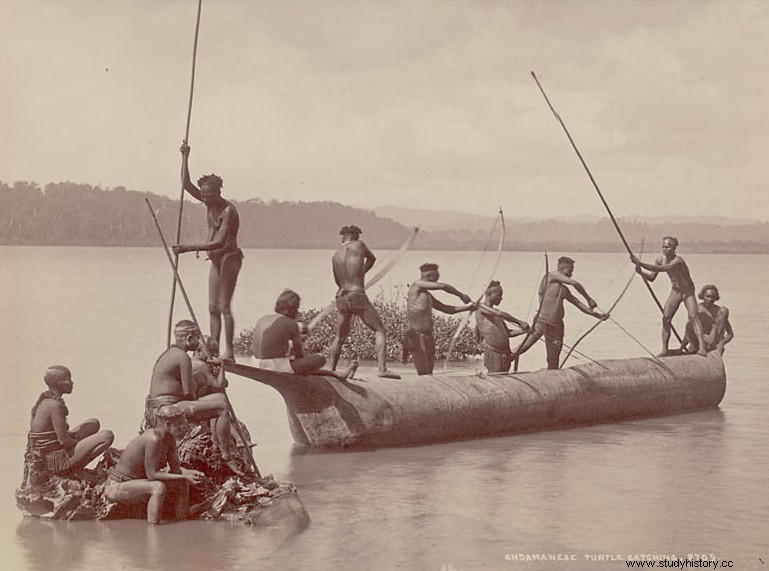
The Andamanian culture is characterized by hunting and gathering. The patterns change depending on the season. Even up to this date, the Jarwa as well as the Sentinel readers, who stay away from outside interference, are dependent on this. Ongees have been preferring the cultivation and cultivation of coconuts since 1958. They may be associated with the collection of coconuts. However, they do not connect with agriculture in any way. In return for the coconut collection, the social welfare services offer them meals as well as other modern products.
Back in time, they were previously completely dependent on products from the forest. It is being replaced by industrial products from mainland India increasingly with time. Fishing is one of the most important aspects of Andaman culture. This is usually done with a bow and arrow in the sea. Most done during low tide throughout the year. Fishing nets are also used, which are hand-held as well as hooks and lines. Ongees have also been known to hunt sea turtles with harpoons. Hunting and gathering activities strongly depend on the season and seasonal changes. During the monsoon, pig hunting using arrows and bows is one of the most important ways to provide food for the Andamanians.
In 1850, dogs were introduced to the Andamanian people. Ever since then, dogs have been a trusted partner for the natives in tracking down pigs in the forest.
Cultural aspects of Andaman culture
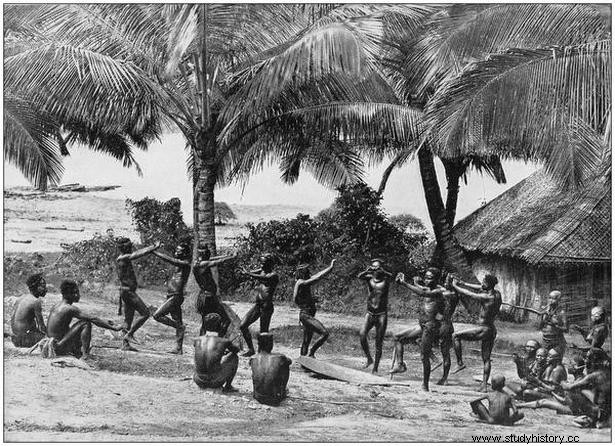
Marriages in the tribes are determined by elders and tribal groups. Tribal societies are led by men, as in most indigenous cultures. The relatives of a married man demand gifts from the father of the bride. The continuing decline in the number of natives has prompted the closest relatives of the Andamanians to marry. Even very older colleagues in most cases.
Monogamy is a strictly followed concept among the Andamanian tribes. Quite different from the Indian cultural tradition, newlyweds in Ongees groups stay on the wife's side of the family as long as a child is born. Divorce is considered an immoral concept by the natives of the Andaman. Especially after a baby is born.
When a child is born, the wife's side of the family takes care of the child until they are of legal age for initiation. The father side of the family takes care of the education as well as the education of a small child. After a girl's menstruation, they come into closer contact with the mother side of the family. Boys and girls are both educated about the forest as well as hunting and gathering.
Settlement Structures
Seasonal changes dictate the settlement patterns that the Andamanian people arrange in their accommodations. From October to February, thatched huts are arranged in circular arrangements. This settlement is usually close to the coastal regions. It has been seen that the hearts of newlyweds who are unmarried are not found in this circular. From me to September, it's time for pig hunting. because of this the people of the panda money move from the coastal areas towards the forest. It is also the optimal time to collect honey, fruit and various types of tubers.
During this time, the archipelago is strongly affected by rain showers. Due to the unfavorable climate, fishing or hunting turtles from the sea has become almost impossible.
Sociopolitical structures
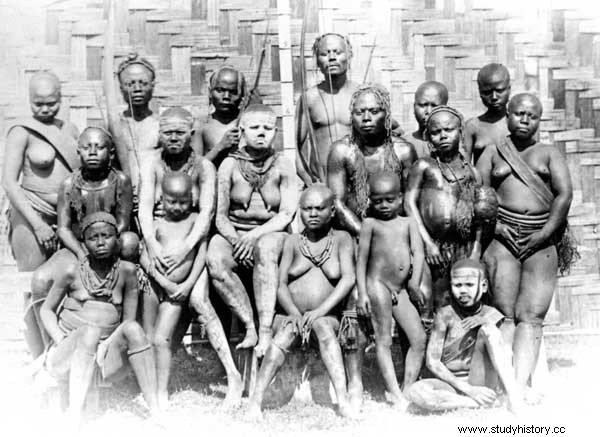
The difference in dialect results in some cases in the formation of different social groups. As in the case of the natives of the Andaman, traditional dialect speakers have their own close community. These local autonomous divisions can be found to be even more divided into smaller groups of people. Despite their differences, these groups practice cross-marriage between their tribes. This helps to control any possibility of conflict. The elders oversee these groups and check every opportunity for feuds from time to time.
Loose feuds inside the trunks
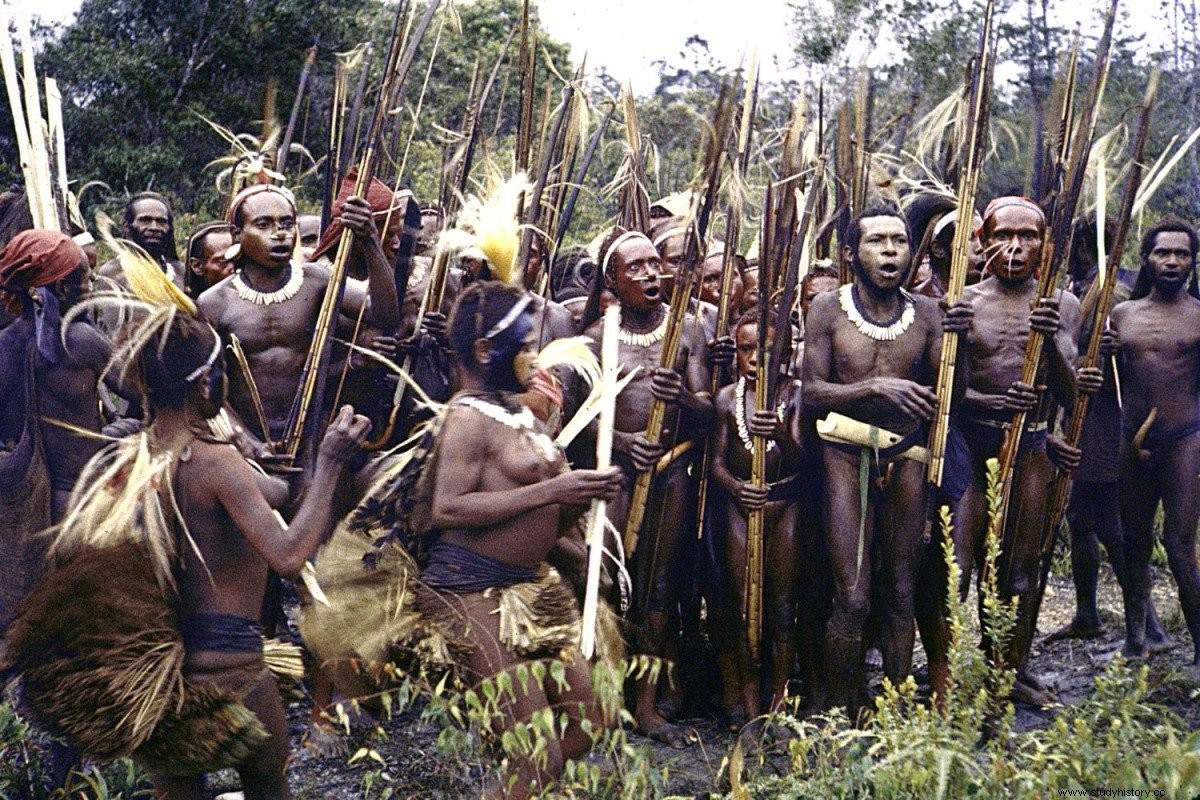
It is a rather strange system of conflict control that the Andamanian people practice. It's called "going away". To understand further, you must first know the reasoning. The Andaman people have been on an unfortunate downturn in recent centuries. This required measures to alleviate any internal conflict that might arise. The "going away" practice was thus born of the elders. When a person is offended in a gathering, they usually express their dissatisfaction by breaking down some property at the camp and then leaving the campsite towards the forest for a few days. This is strongly encouraged to reduce the chances of an increase in conflict. During the time the victim has traveled to the forest, the rest of the people fix the damage.
Most of the time, conflicts were subdued by avoidance. In rare cases, when conflicts arose, women played a key role in resolving such issues. They act as a channel between both parties for negotiations. The solution of questions was made in parties that had both the offender and the offending party present. In some cases, if the conflict is between people with different dialects, the peace-building ceremony extends to a series of parties and peace talks conducted over time.
Art forms among native Andamans
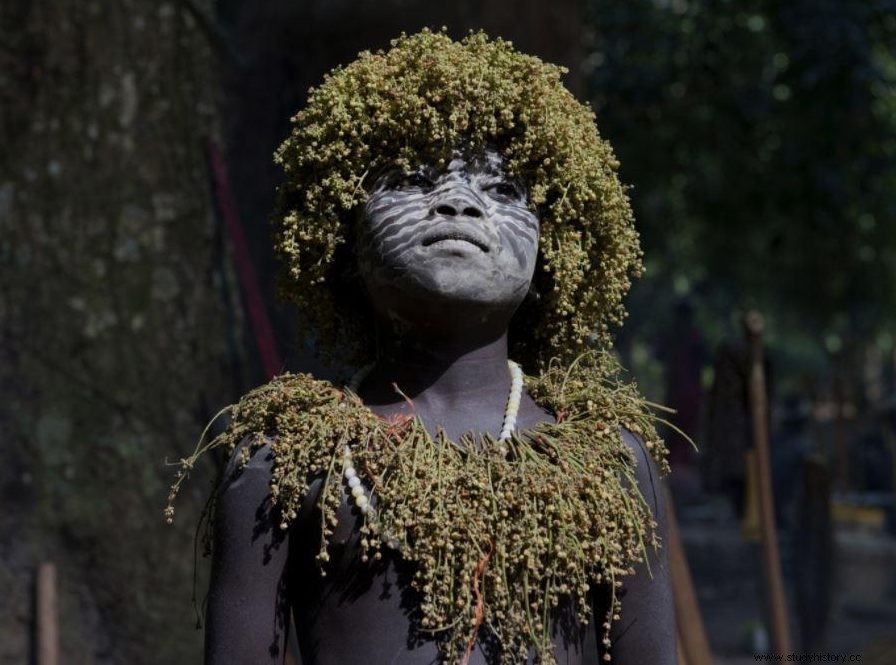
The most important aspect of art in the Andamanian culture is body and face painting. Each lineage in the tribes has their separate designs passed on from their ancestors. These ancient patterns are painted on the faces and bodies of both sexes. The paint is usually made with a combination of colored clay; red, yellow, white and lard together with some water. These patterns are applied to the face and body of individuals through comb-like tools and fingers. Body painting is mostly seen during special ceremonies, while face painting is done daily on a routine basis.
Women are the most common pattern painters in most families. In various ceremonies that usually involve singing, both sexes adorn themselves with ornaments made of shells. The songs are usually a traditional style that is passed down from generation to generation. Newer songs are not made, the oldest songs are constantly being recorded by the newer generations. The traditional songs contain mythological events as their widespread subject.
The weeping form of song
Especially when it comes to Ongees people, the traditional songs are in the form of mourning. Songs are sung in such a way that to an outsider it looks as if people are crying and crying. Dramatic storytelling is another art form practiced by the Andamanian people.
Traditional folk dance usually accompanies the song in ceremonies. No musical instruments are usually seen in any of the tribal ceremonial activities. The great Andamanian people remain an exception to this rule because most of their traditional styles and customs are currently lost.
Medicine in the tribes
The Andamanian people have a belief that "extreme changes in body temperature are the widespread cause of a person's disease". If a person's body temperature varies too much from the norm, it results in side effects that follow up with the disease. If a person gets too hot, it can result in the release or solidification of fluids in the body during hot and cold extremes. The diagnosis from the village elder determines the way the wound is treated. It is usually done with different clay paints, where different types of herbs can be mixed. The diseased part of the body can be tied with strings and make it bleed by cutting up the affected area as well. Massage is another way to do the same.
Supernatural myths also play a major role in tribal medicine applications. For example, the native tribes carry the bones of their relatives who have passed away to ward off evil spirits from themselves. There is a widespread belief among the natives of the Andaman tribes that the spirits of the ancestors take care of their relatives even from the afterlife.
The myth of life after death
There are curious myths associated with death and life after death among the Andamanian tribes. Even after a person dies, their spirit is considered immortal. It is believed among the Andamanian people that the spirit either escapes to the forest or the sea. The inhabitants of the coastal area are believed to be the spirit of the sea ( Jurua ) and the spirit of the forest ( Lua ).
It is believed that those who die as a result of accidents turn into malicious spirits due to lack of ceremonial burial.
The Andamanians are a withdrawn indigenous tribe, unfortunately on the verge of extinction. While the social welfare programs of the Indian government helped to stabilize the number, the cultural aspects of the natives had faded with increasing knowledge of the outside world. The great Andamanian group is an unfortunate example of the lost customs.
If you plan to visit the Andaman archipelago and interact with the natives, be respectful of their customs.
Have fun exploring your adventures!
